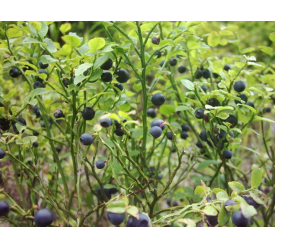Climate change and black grouse populations
The effect of weather on grouse populations has long been a controversial one. While the role of weather has been questioned (Lindström 1996), field studies suggest weather to strongly affect e.g. early chick survival (Erikstad & Andersen 1983). Recent work shows that lower temperatures was a primary cause of chick mortality (Ludwig et al. 2010).
 Climate change is known to have a signficant impact on many bird species, by altering phenology of key life history phases. For grouse in Finland, increase spring temperatures has advanced egg-laying and hatching (Ludwig et al. 2006). However, summer temperatures have not advanced and grouse chicks are now hatching during colder post-hatching conditions (Ludwig et al. 2006). Since temperature is critical for chick survival, grouse populations in Finland have suffered from decreased reproductive outputs, decreasing populations and reduced population cycles (Ludwig et al. 2006). In additon, altered hatching date may lead to a mismatch in the availability of key insect food for chicks, though this has yet to be tested fully (see Wegge et al. 2010). Whilst the impacts of climate change have so far been documented best in Scandinavia, it is unclear how much climate change can impact populations in other areas. Data from Alpine regions suggest no impact of climate change (Bernagaud et al. 2011).
Climate change is known to have a signficant impact on many bird species, by altering phenology of key life history phases. For grouse in Finland, increase spring temperatures has advanced egg-laying and hatching (Ludwig et al. 2006). However, summer temperatures have not advanced and grouse chicks are now hatching during colder post-hatching conditions (Ludwig et al. 2006). Since temperature is critical for chick survival, grouse populations in Finland have suffered from decreased reproductive outputs, decreasing populations and reduced population cycles (Ludwig et al. 2006). In additon, altered hatching date may lead to a mismatch in the availability of key insect food for chicks, though this has yet to be tested fully (see Wegge et al. 2010). Whilst the impacts of climate change have so far been documented best in Scandinavia, it is unclear how much climate change can impact populations in other areas. Data from Alpine regions suggest no impact of climate change (Bernagaud et al. 2011).
 However, the impact of climate change can be complicated. As well as an impact chicks, changes in climate during other parts of the grouse lifecycle may be important. This includes warming summers impacting bilberry herviore defense (Selås et al. 2011) and reduced snow cover in winter which reduces snow burrowing, thereby increasing the thermoregulation costs in winter and increases predation risk (Spidsø et al. 1997). These interactions highlight how climate change can be a diverse threat to grouse populations.
However, the impact of climate change can be complicated. As well as an impact chicks, changes in climate during other parts of the grouse lifecycle may be important. This includes warming summers impacting bilberry herviore defense (Selås et al. 2011) and reduced snow cover in winter which reduces snow burrowing, thereby increasing the thermoregulation costs in winter and increases predation risk (Spidsø et al. 1997). These interactions highlight how climate change can be a diverse threat to grouse populations.
References
Barnagaud, J.-Y., Crochet, P.A., Magnani, Y., Laurent, A.B., Menoni, A., Novoa, C. & Gimenez, O. (2010) Short-term response to the North Atlantic Oscillation but no long-term effects of climate change on the reproductive success of an alpine bird. Journal of Ornithology, 152, 631-641.
Erikstad, K. E. & Andersen, R. (1983) The effect of weather on food intake, insect prey selection and feeding time in different sized willow grouse broods. Ornis Scandinavica 14, 249–252.
Lindström, J. (1996) Weather and grouse population dynamics. Wildlife Biology, 2, 93–99.Ludwig, G.X., Alatalo, R.V., Helle, P. Linden, H., Lindström, J. & Siitari, H. (2006) Short- and long-term population dynamical consequences of asymmetric climate change in black grouse. Proceedings of the Royal Society London Series B, 273, 2009-2016.
Ludwig G. X., Alatalo R. V., Helle P. & Siitari H. (2010) Individual and environmental determinants of early brood survival in black grouse Tetrao tetrix. Wildlife Biology, 16, 367–378.
Selås, V., Sonerud, G.A., Framstad, E., Kålås, J.A., Kobro, S., Pedersen, H.B., Spidsø, T.K. & Wiig, Ø. (2011) Climate change in Norway: warm summers limit grouse reproduction. Population Ecology, 53, 361-371.
Spidsø, T.K., Hjeljord, O. & Dokk, J.D. (1997) Seasonal mortality of black grouse Tetrao tetrix during a year with little snow. Wildlife Biology, 3, 205–209.Wegge, P., Vesterås, T. & Rolstad, J. (2010) Does timing of breeding and subsequent hatching in boreal forest grouse match the phenology of insect food for chicks? Annales Zooligici Fennici, 47, 251–260.


